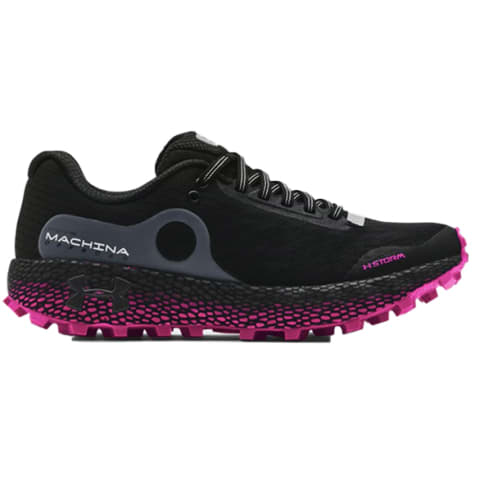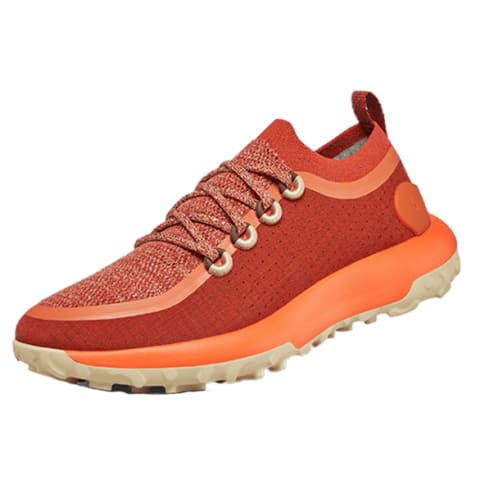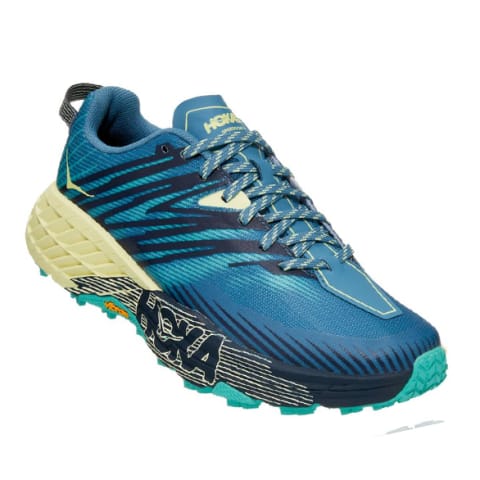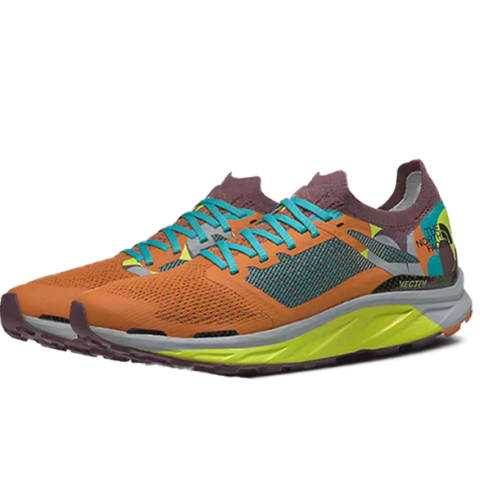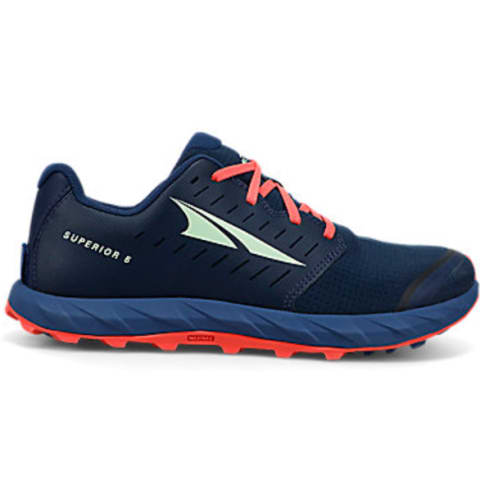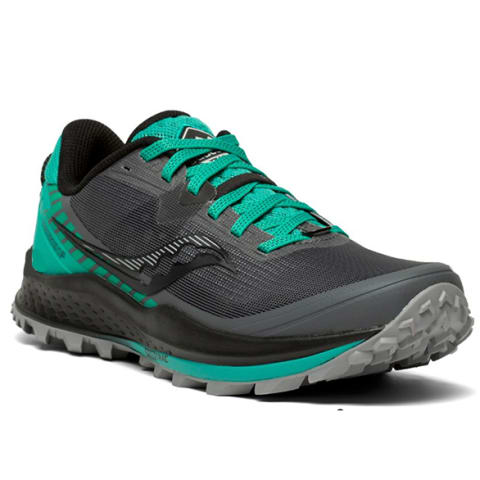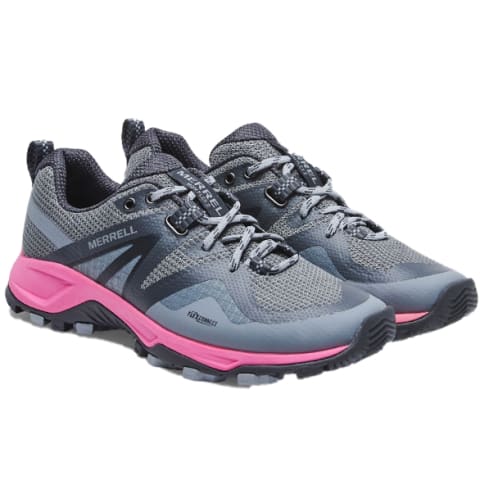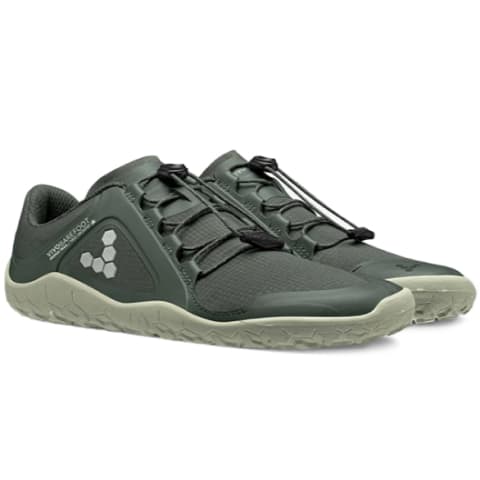Why trail running? I think RRCA-certified running coach Raj Hathiramani, an instructor with Aaptiv and Mile High Run Club, sums up my feelings pretty perfectly: “Trail running is an effective way to escape routine and immerse yourself in nature. Running through oxygen-rich, shaded woods will make you feel raw, energized, and connected to something bigger—Mother Earth.” “Trail running creates less impact on the body while building more strength in muscles to stabilize the core and legs,” says Hathiramani. “Plus, trail running forces you to shorten your stride and increase your turnover to navigate various obstacles, resulting in more efficient running!” However, if you’re new to trail running, there are some important factors to keep in mind before embarking on an off-road adventure. I chatted with running coaches and trail experts to help you stay safe, smart, and find the best trail running shoe to meet your needs. Just like its road-running counterpart, I love that it seamlessly connects to the UA Map My Run app, for real-time form tips. This version also has a number of features that make it ideal for the trail, like a water-resistant upper, support around the heel for extra stability, plus plenty of traction and strategic lugs—to help take on any terrain. UA HOVR Machina Off Road Running Shoes, underarmour.com ($160) Similar to their usual best practices, these running shoes are constructed with earth-friendly materials—such as eucalyptus tree fiber, natural rubber, and recycled plastic bottles, to name a few. And they certainly don’t compromise on performance. When I tested these out, I personally appreciated the wonderful combination of a wide, cushioned outsole and ultra-grippy tread. Plus, it has a knit, sock-like “collar” at the top of the shoe that wraps around your ankle and keeps nasty rocks and debris out. Trail Runners SWT, allbirds.com ($138) When I laced up these shoes to take them for a spin, what really stood out to me was the fantastic cushion along with superb tread (think deep lugs and ultra-grippy rubber, perfect for wet or dry terrain), which gave me so much confidence on the trail. Speedgoat 4, hoka.com ($145) I was also immediately struck by how much faster I felt, which has to do with various features in the shoe, such as a rocker midsole and 3D carbon-fiber plate for forward propulsion (among other energy-maximizing technology). Flight VECTIV, thenorthface.com ($199) For someone who prefers a little less cushion, the Altra Superior 5 is a great choice. That said, when I tried these out myself, I was impressed to find that even with a thinner outsole than I was used to with other trail runners, my foot still felt supported and immune to the feeling of rocks underfoot. Plus, the overall lightweight shoe helped me stay nice and quick on my feet. Superior 5, altra.com ($120) It also has a nice combination of responsive cushioning and a protective rock plate, to help propel you through a trail run, without anything slowing you down. Peregrine 11, saucony.com ($94.95) This shoe is all about protection, thanks to a toe cap, rock plate, and plenty of ankle support—plus, this edition has a GORE-TEX® waterproof membrane to keep your feet dry and safe from the elements. MQM Flex 2 Gore Tex, merrell.com ($104.95) It also features a wider construction for stability, and to fit your foot more naturally. What’s more, it’s another fantastic sustainable option, made using recycled all-weather mesh. Primus Trail II All Weather FG, vivobarefoot.com ($195) For starters, “whether you’re a beginner or an expert, before heading out for a run, it is imperative that we all plan ahead. In fact, the first step in purchasing a trail shoe should really be to research the trail and read up on what to expect,” says Meaghan Praznik, head of communications at AllTrails. “Choose trails appropriate for your fitness level and any injuries or conditions you have,” Hathiramani adds. “For example, if you haven’t been training on hills, avoid trails with challenging inclines and declines. If you are injury-prone, look for softer surfaces such as grass, dirt, or wood chips.” And if you’re new to trail running, be patient with your progress, says running coach and physical therapist Bridget Pyke. “Start on easier trails and run shorter distances, then gradually build up to longer and more technical trails.” In preparation, she also advises incorporating ankle mobility and stability exercises into your routine—to help prevent injury, such as ankle sprains. Lastly, “For safety, always run with a buddy or a group,” says Pyke. “If you are running outside of cell phone range, bring a GPS tracking device in case of emergency.”


